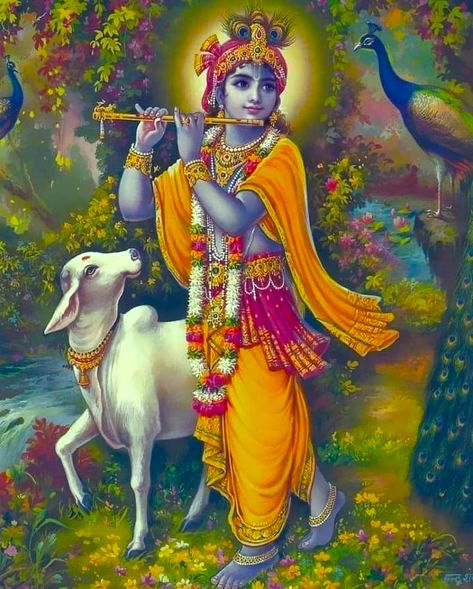Mahanidhi Swami
Why do raganuga bhaktas especially worship Govardhana shilas?
Sri Krishna Dasa Kaviraja answers in Chaitanya-caritamrita (3.6.294-307):
“One day during His gambhira-lila in Jagannatha Puri, Sri Gauranga Mahaprabhu lovingly gave Sri Raghunatha Dasa Goswami the Govardhana Shila that He had been personally worshiping for three years. At that most auspicious time, Mahaprabhu said, ‘This Govardhana Shila is directly the transcendental form of Sri Krishna. You should attentively worship Sri Girirajaji with great eagerness.’ ”
prabhu hahe ei shila Krishnera vigraha
inhara seva kara tumi kariya agraha
Mahaprabhu continued, “Worship Sri Girirajaji with purity, then you will quickly attain the wealth of Krishna prema”.
ei shilara kara tumi sattvika pujana
acirat pabe tumi Krishna prema dhana
‘To worship Sri Girirajaji, you need a jug of water and tulasi manjaris. You should serve Sri Girirajaji with all purity and gopi bhava”. sattvika seva ei shuddha bhava kari[gopi-bhava is the purest bhava, shuddha bhava].
“With faith you should offer eight soft tulasi manjaris [four to each lotus foot].”
dui dike dui patra madhye komala manjari
ei mata ashta manjari dibe shraddha kari
“After receiving the Govardhana Shila, Sri Raghunatha Dasa Goswami served Sri Girirajaji with great bliss, anande raghunatha seva karite lagila. Svarupa Damodara gave Sri Raghunatha Dasa Goswami two cloths, a wooden platform and a water jug for Sri Girirajaji puja”.
“When Sri Raghunatha Dasa Goswami worshiped Sri Girirajaji, he saw the shila as directly Vrajendranandana”, puja kale dekhe shila vrajendranandana.” [The carefree, funny, witty lover of the cowherd girls]. In other words, Sri Raghunatha Dasa Goswami worshiped Sri Girirajaji in the raganuga mood of worship.
Sri Krishna Dasa Kaviraja continues, “Sri Raghunatha Dasa Goswami submerged in Krishna prema whenever he remembered how Mahaprabhu had given him the Govardhana Shila with His own hand”.
prabhura sva hasta data Govardhana Shila
ei chinti raghunatha prema bhashi gela
“Great happiness would arise in his heart when Sri Raghunatha Dasa Goswami simply offered water and tulasi to Sri Girirajaji [in the simple Vraja mood of gopi-bhava in raga marga.] Such joy does not arise even if one worships with all the 16 different articles of Thakuraji puja”. [as done in vaidhi-marga]
jala tulasira sevaya tanra yata sukhodaya
shodash opacara ujaya tata sukha naya
“One day Svarupa Damodara said, ‘O Dasa Goswamiji! Now start offering Sri Girirajaji a small amount of khaja [a rich and sweet, crunchy grain sweet] and sandesh [a mild milk sweet]. If you offer these with faith, they will taste just like nectar.’ ”
ashta khaja sandesha kara samarpana,
shraddha kari dile sei amritera sama
“Upon receiving the Govardhana Shila and the garland [mala] of small, shiny red and black dried seeds of the gunja shrub from Mahaprabhu, Sri Raghunatha Dasa Goswami thought, ‘By giving me this Govardhana Shila, Mahaprabhu has awarded me a place near Govardhana Hill. And by giving me this gunja mala, Mahaprabhu has offered me the beautiful, sweet lotus feet of Srimati Radhika.’” [Bengali trans. Sri Advaita dasji]
shila diya gosani samarpila govaradhane
gunja mala diya dila RADHIKA CHARANE
Sri Radhika charanashraya ki jai! Sri Giriraja Maharaja ki jai ho! Sri Krishna Dasa Kaviraja ki jai! Sri Raghunatha Dasa Goswami ki jai! Jaya Jaya Sri Radhe!

